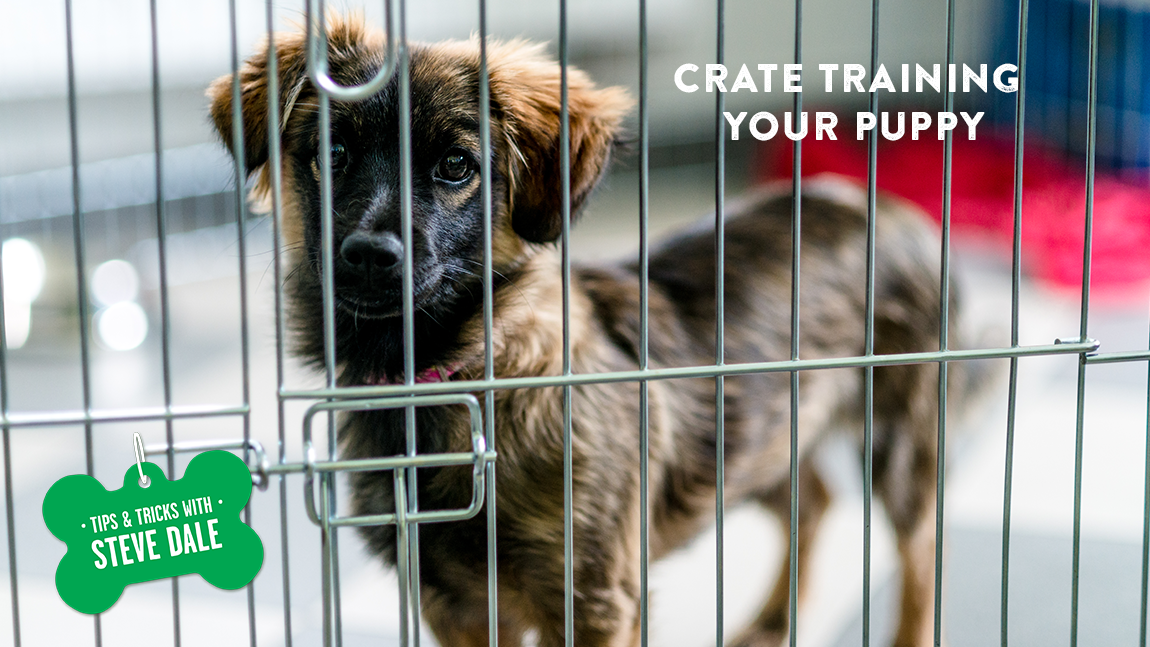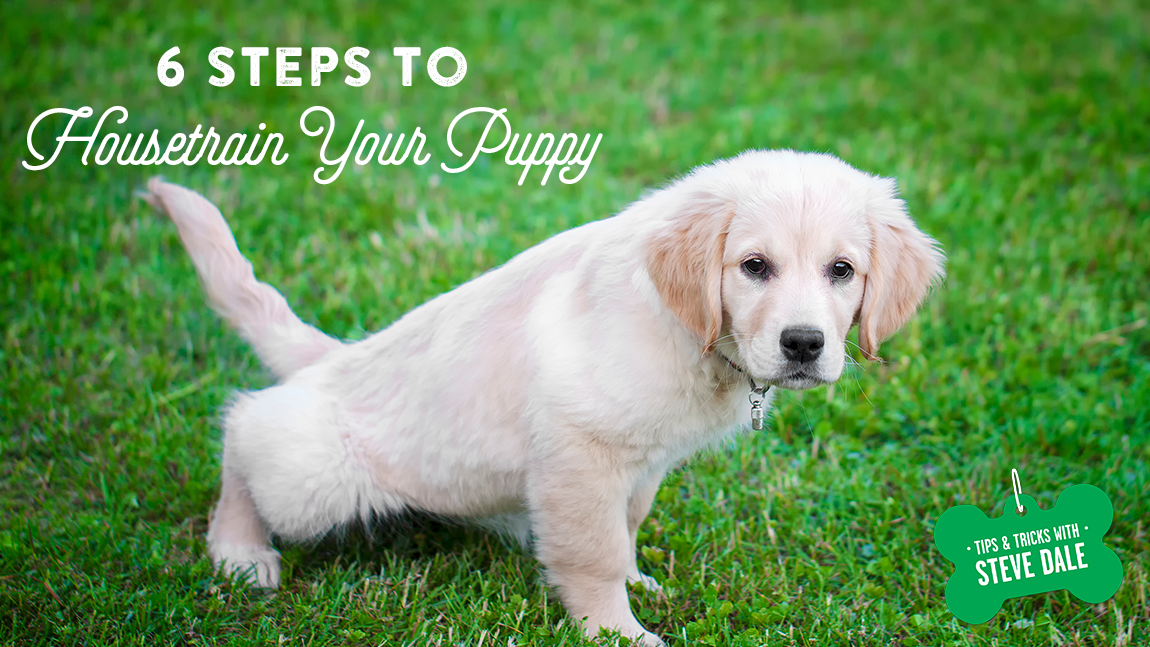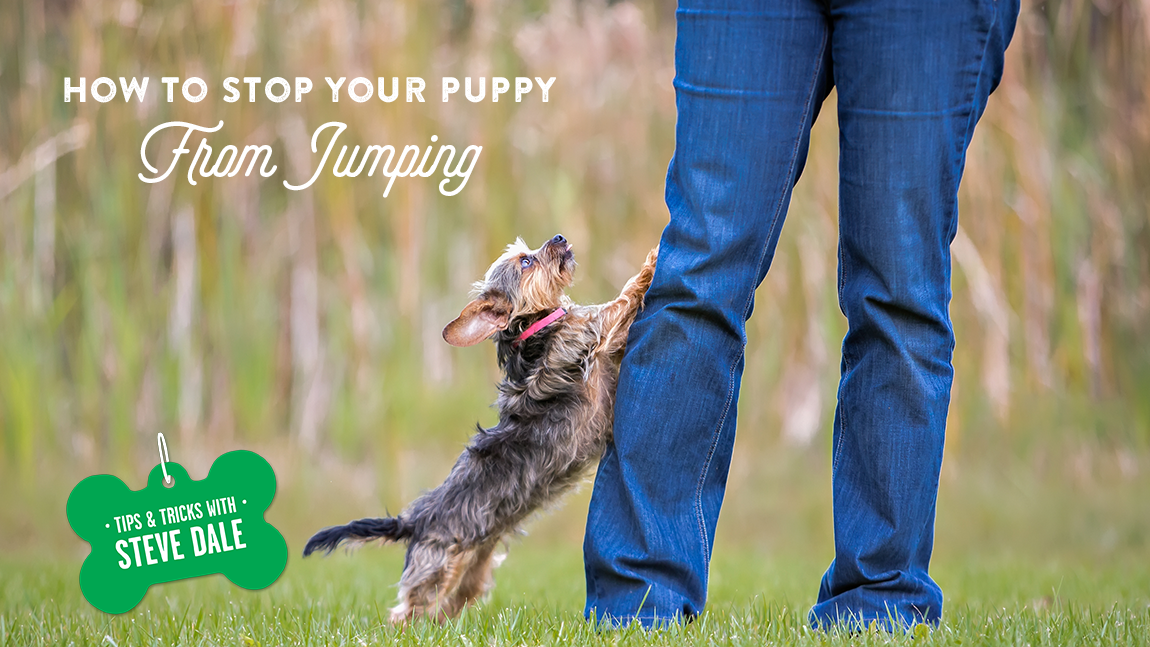By Steve Dale
Most puppies should be crate trained for three reasons:
- Crate training keeps your puppy and your possessions safe. A puppy in a crate won’t chew on wires or get into other potential hazards. Ingesting inedible items can cause an upset stomach or much worse. Crates also keep your possessions safe. No one wants to come home to their favorite pair of shoes chewed into a million pieces.
- Crate training assists with housetraining. It’s a fact: dogs are hard-wired to not want to soil the place where they sleep.
- Crate training teaches puppies to relax when no one is home. A puppy in a crate never gets into the habit of destroying household items while home alone. In the crate, he’ll learn to relax – most likely sleep – while you’re away.
There are many other advantages to crate training. When traveling, a crate becomes a home away from home. If a dog is anxious about too much noise or commotion in the house, perhaps due to construction or a child’s birthday party, a crate can become a safe haven.
Although crates have many benefits, it’s important to remember that a crate is not a babysitter (or a puppysitter), especially when it comes to house-training.
As your puppy grows, the hours he can spend in a crate without needing to eliminate can be extended to match his age. The general rule for this is one hour per month of the pup’s age, plus one hour. So, at 2-months old, the puppy could reasonably be expected to stay in the crate for three hours. An important note: For small dogs, you should match the age. For example, a 2-month-old small dog could stay in the crate for two hours.
This rule only applies if the pup being crated went to the bathroom before going into the crate, so he’s starting on empty.
Note that some puppies, such as those rescued from puppy mills or who have been trained to have accidents at pet stores confined in a cage, may not be as easy to crate train.
Puppies often complain about being away from family members, but pups with true separation anxiety typically aren’t better off in crates. To determine if your puppy has real separation distress, a diagnosis is required from a certified animal behavior consultant or a veterinary behaviorist.
How To Do It
To begin the process of training a dog to the crate, dog trainer Rendy Schuchat says, “Make the crate a happy place. Begin with the puppy inside the crate when you’re at home, and even in the same room at first. Put some nice treats in there. Encourage the puppy to be in there on his own. We even encourage feeding puppies from their crates.”
Another way to get the puppy interested in a crate and to positively predispose a puppy to associate the crate with good feelings is to randomly leave treats inside the crate, like Vita Bone® treats. The pup will love that the crate doubles as an automatic treat dispenser.
Provide soft bedding inside the crate (particularly if you want your puppy to sleep overnight in the crate), but be sure to supervise at first, because some dogs will rip this bedding to shreds, and even eat some.
To be useful for house training, the crate needs to be just big enough for the puppy to lie down and turn around comfortably, but not too big – this isn’t a luxury condo. Crate dividers enable you to shrink a large crate and then adjust the size as your puppy grows.


